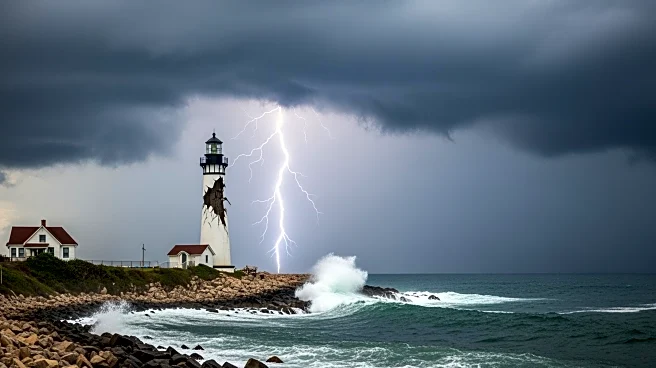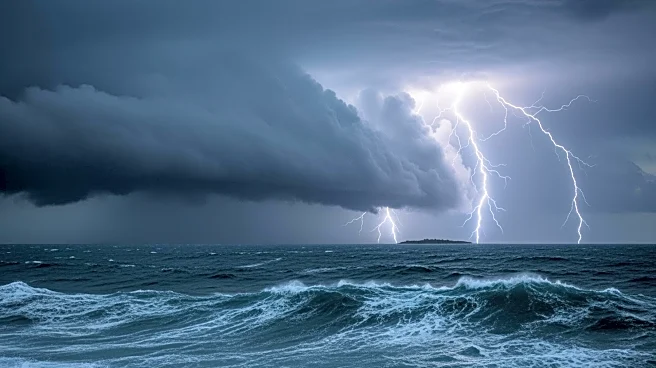What's Happening?
The Jamaican government, with assistance from a U.S. State Department Disaster Relief Task Force, is addressing the aftermath of Hurricane Melissa, which struck the island with winds up to 185 mph. The storm
caused significant destruction in Westmoreland, St. Elizabeth, and St. James Parishes, leaving many without power and essential services. Relief efforts are underway, with the U.S. providing $11 million in aid, including food supplies and water treatment systems. The Jamaican Defence Force is conducting food drops and medical airlifts in the hardest-hit areas.
Why It's Important?
The impact of Hurricane Melissa is profound, affecting thousands of residents and crippling infrastructure. The U.S. involvement highlights international cooperation in disaster response, emphasizing the importance of swift aid to prevent further humanitarian crises. The devastation poses challenges for Jamaica's recovery, potentially affecting its economy and public health systems. The situation underscores the vulnerability of Caribbean nations to extreme weather events, prompting discussions on climate resilience and disaster preparedness.
What's Next?
Continued relief efforts are expected, with the U.S. and other international partners likely to increase support. The Jamaican government will need to focus on rebuilding infrastructure and restoring essential services. Long-term recovery plans will be crucial to address the economic and social impacts. The situation may prompt policy discussions on improving disaster response and infrastructure resilience in the region.
Beyond the Headlines
The hurricane's impact raises questions about climate change and its role in intensifying storms. The destruction of natural landscapes and infrastructure highlights the need for sustainable development practices. The event may influence future international aid strategies and disaster preparedness policies, emphasizing the importance of global cooperation in addressing climate-related challenges.














